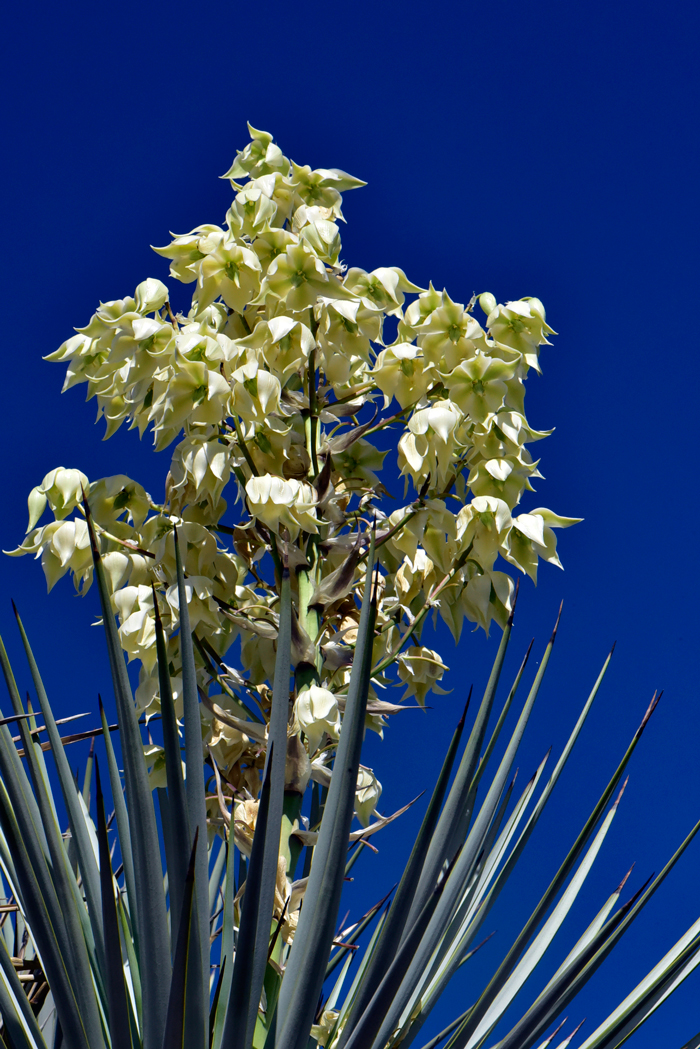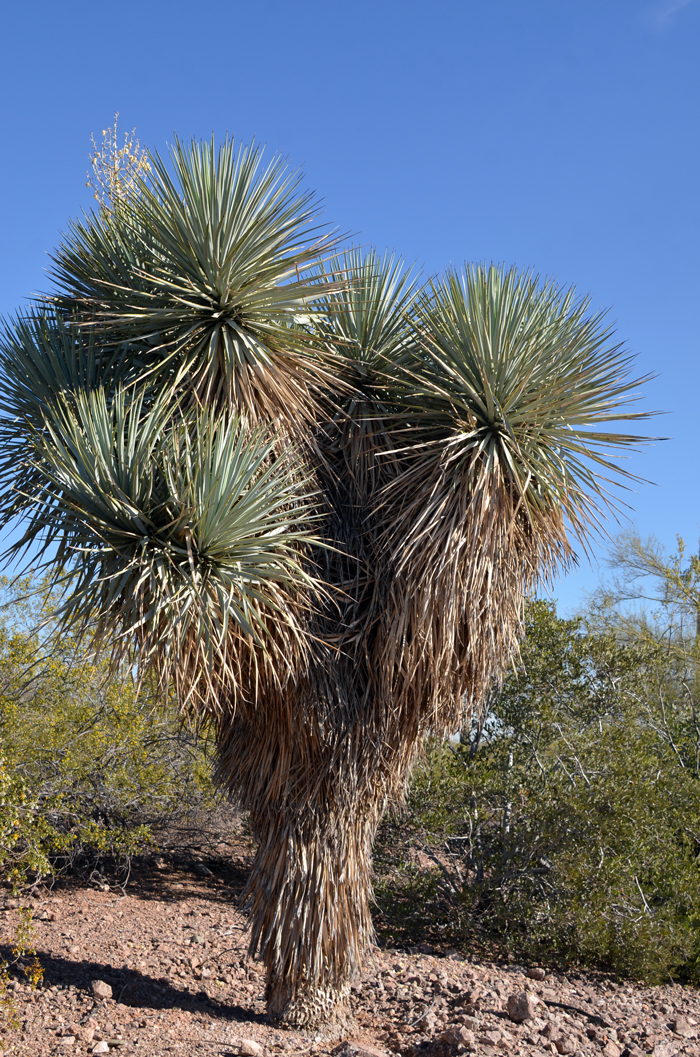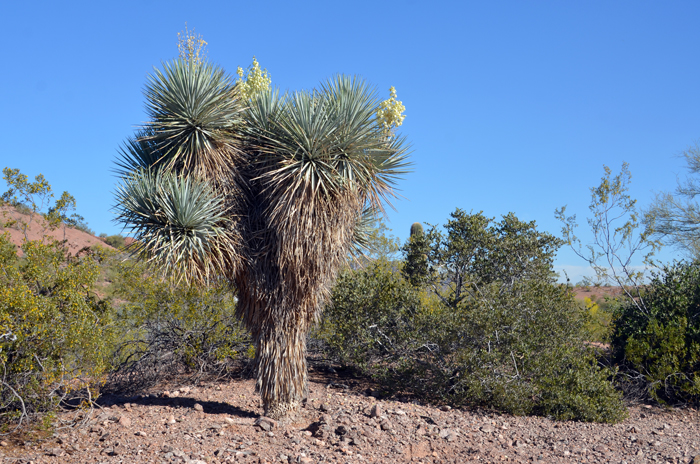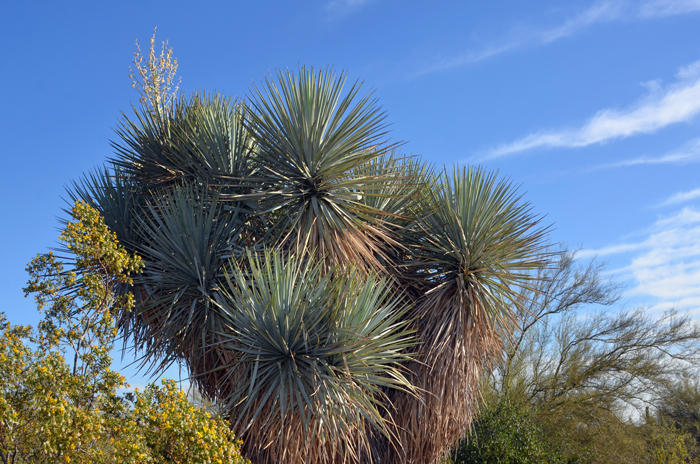Yucca rigida, Blue Yucca




Scientific Name: Yucca rigida
Common Name: Blue Yucca
Also Called: (Spanish: Izote Azul, Palmilla, Palmita, Sotol, Yuca)
Family: Agavaceae, Agave or Century Plant Family (Reclassified to Asparagaceae)
Synonyms: (Yucca rigida var. inermis, Yucca rupicola var. rigida)
Status: Native to northern and central Mexico in the Chihuahua Desert.
Duration: Perennial
Size: Up to 12 feet (3.65 m) or more tall and 5 feet (1.5 m) wide.
Growth Form: Tree; plants solitary and erect, arborescent usually with 1 stem or trunk and 3 or more erect branches with maturity.
Leaves: Green, blue-green (glaucous), evergreen, leaves very rigid, straight (linear or lanceolate) up to 2 feet in length, leaves emerge in clusters on the new growth of the stems or branches, leaf tips very sharp.
Flower Color: White on long flowering stalks (inflorescence) that may reach up to 3 feet or more.
Flowering Season: March to April
Elevation: 5,000 to 18,000 feet (1,524 to 5,486 m) in the highest Chihuahua Desert areas in northern Mexico.
Habitat Preferences: Found in Larrea-Yucca desert shrub in limestone soils; high elevations in mountainous areas in the Chihuahua Desert.
Recorded Range: Blue Yucca is found in northern and central Mexico in the Chihuahua Desert in southeastern Chihuahua southward into Durango, Mexico. It is included in Southwest Desert Flora because it is a Chihuahuan Desert species in SW North America and extends within very close proximity to Big Bend Ranch State Park in Texas.
North America & US County Distribution Map for Yucca faxoniana - Not found in the United States; northern and central Mexico species.
U.S. Weed Information: Not found in the United States.
Invasive/Noxious Weed Information: Not found in the United States.
Wetland Indicator: Not found in the United States.
Threatened/Endangered Information: Not found in the United States.
In the Southwestern United States: Arizona has 8 species of Yucca, California has 3 species, Nevada has 5 species, New Mexico has 10 species, Texas has 18 species, Utah has 7 species. All data is approximate and subject to taxonomic changes.
Comments: Blue Yucca is a beautiful, striking Yucca often used as a premiere landscape plant in the southwestern United States. It is native to northern Mexico in southeastern Chihuahua southward into Durango.When used as a landscape plant one should exercise extreme caution while handling the branches which are dangerous because they are so stiff and sharp. It would be wise to keep the plants aways from heavily traveled areas.
In Southwestern Desert Flora also see: Banana Yucca, Yucca baccata; Beaked Yucca, Yucca rostrata; Eve's Needle, Yucca faxoniana; Joshua Tree, Yucca brevifolia and Soaptree Yucca, Yucca elata.
The species epithet "rigida" is a reference to its stiff rigid leaves.

